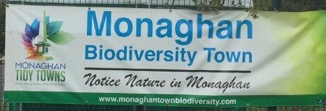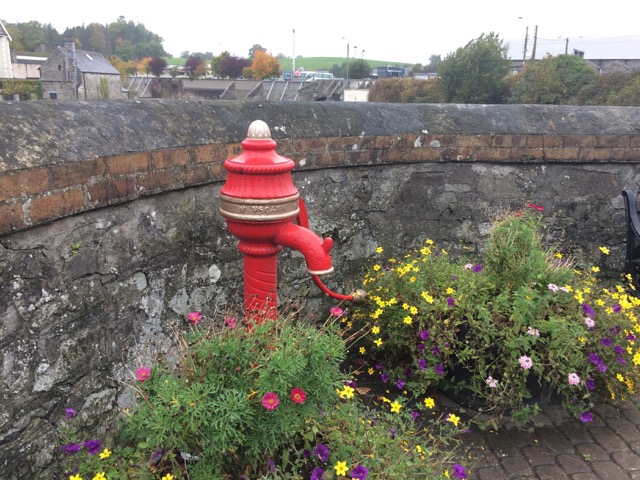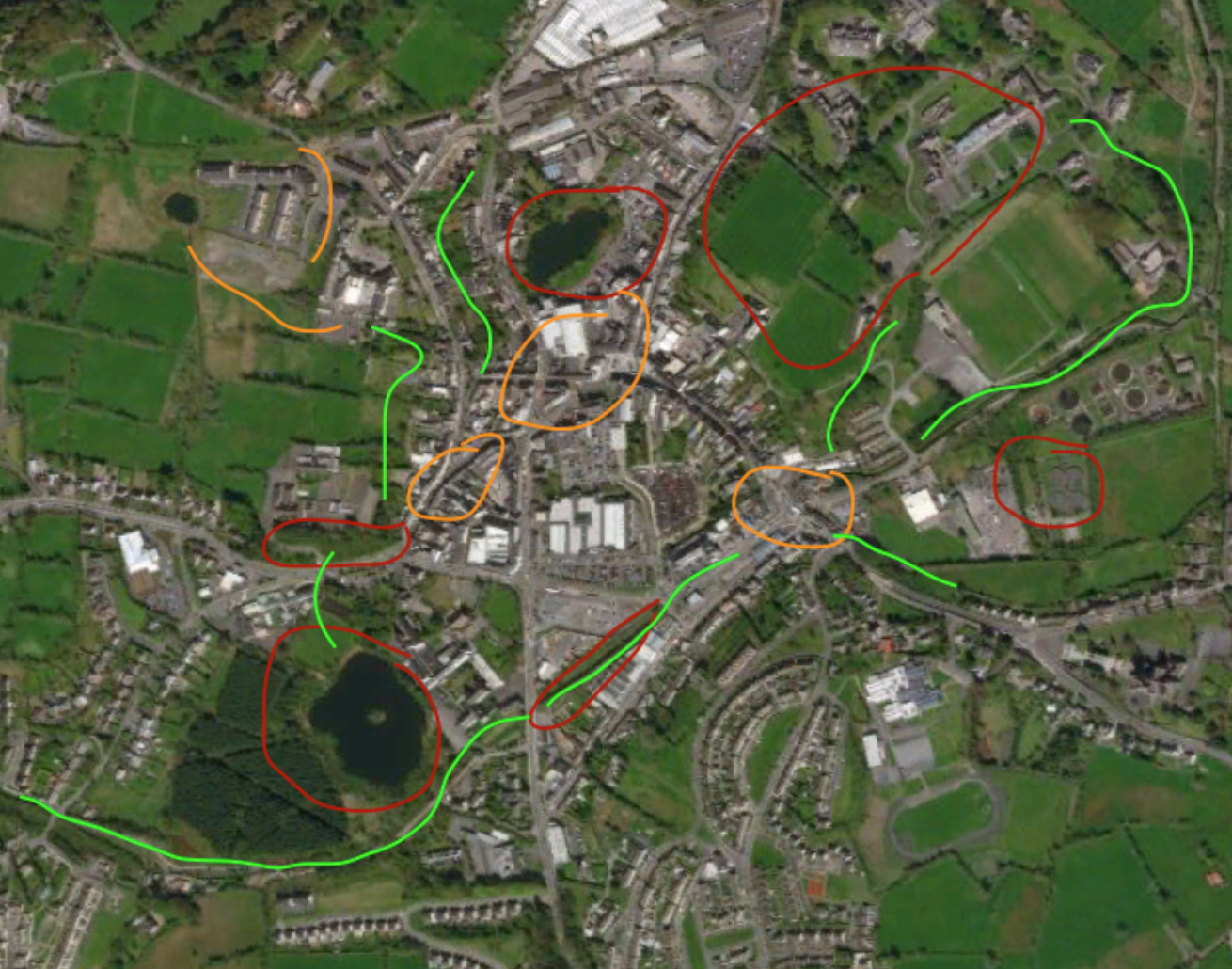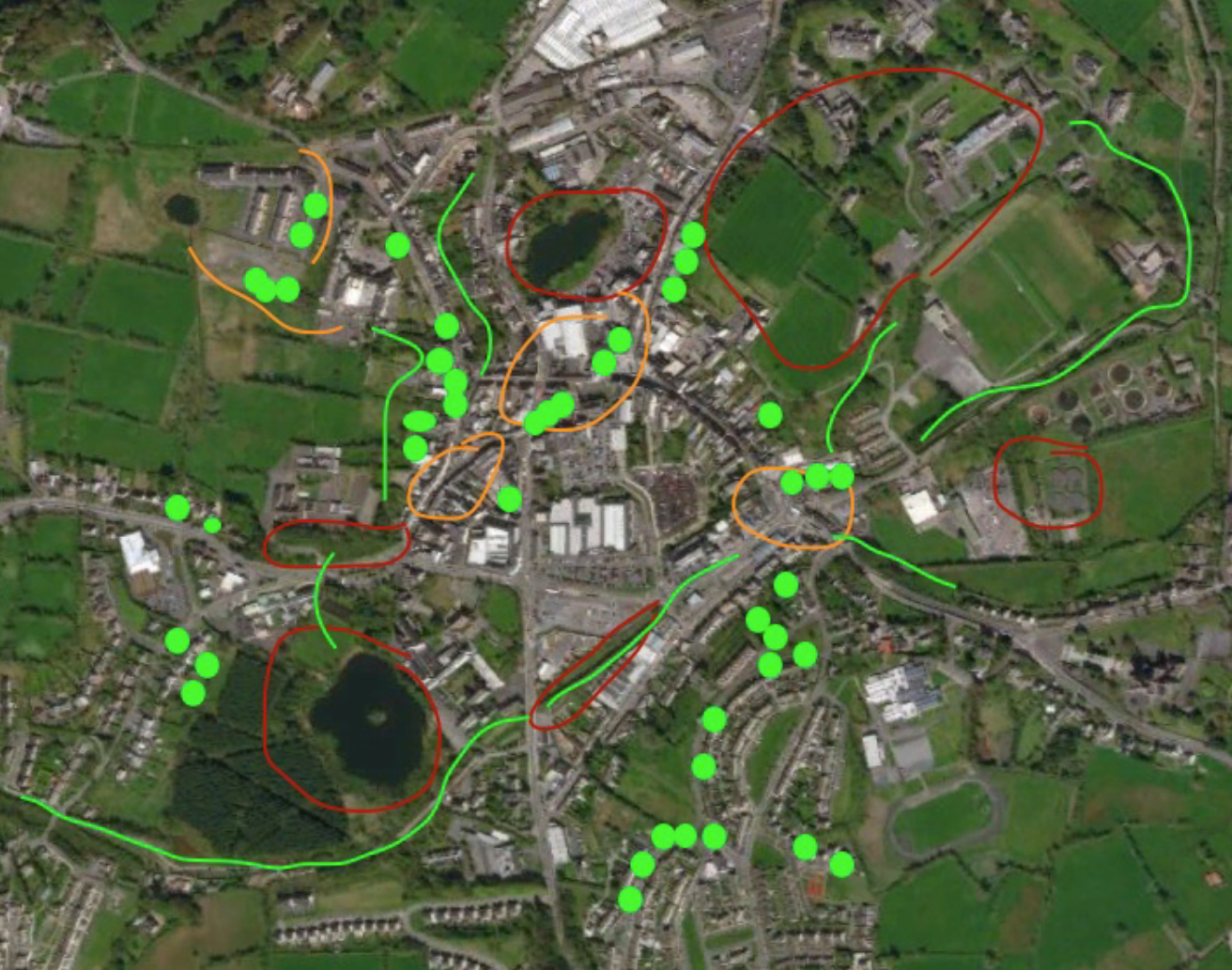We’re going to tell you the story of how this project came about, grew and became the most important pollinator project in Co. Monaghan and possibly well beyond. We were delighted when the All-Pollinator Plan was published in 2015. We acknowledge the importance of its implementation and recognise the critical need for its success. However, you will read how we in Monaghan Tidy Towns began our own efforts some years prior and how they continue still. This is the story of our Biodiversity Town and its push for pollinators.
First, a little background: Monaghan – Could it be a Biodiversity Town? Our story starts in 2010: this was International Year for Biodiversity and it’s no coincidence that we began our biggest project then. Monaghan Tidy Towns committee decided that the only way to understand how we might make a positive difference was to first find out what we have in terms of habitats, species and overall biodiversity and crucially where we have it. We commissioned a local Ecologist to complete a Habitat Survey. Some 24 sites were examined and the best of these – the ‘Top 12’ were studied in detail. We thus got our first picture of the best of biodiversity sites in the town and environs and how they might be managed and perhaps even linked up.
2011: Problems for Pollinators: Bad News for Bees
What we were hearing both internationally and nationally wasn’t good. Bee colonies collapsing and bumblebee numbers falling were now stories from home. We knew that this was both an urgent problem and an opportunity to make a difference. We started planning our long-term projects to include key features for bees as well as including plants for pollinators in our planting plans. We created our ‘Habitat Highlights’ project: we took the Top 10 of our habitats from the survey and told everyone about them with a new interpretation panel, and a QR-code guided walking wildlife trail. Why build one bug hotel when you can open a chain of bee hotels? So that’s what we did.
2012: Plants for Pollinators: Planting Plans
Have we mentioned how lucky we were having a dedicated horticulturist on the Monaghan Town Council Team? Not only that, but one committed to conservation, too. This was invaluable to our drawing up of planting plans that not only looked the business but did the buzzness as they included wonderfully pollinator-attractive plants such as Nepeta, Poppies, Mint and Stonecrops – all very tastefully done.
2013- 2014: Pedalling Pollination: The Ulster Canal Greenway
Our very own Greenway – have you been? If you’re visiting Monaghan Town, we’ll have to insist that you do. This 4km stretch of beautiful mixed use trail follows the route of our disused Ulster Canal. Now, while the canal may never have been a commercial success (it lasted less than 100 years of trading) it has now become our finest asset for people – but also for many other species. Identified as a key resource in 2010, we saw our opportunity to enhance and maintain a wildlife corridor of 4km from start to finish. One day it will help us link Lough Neagh to the Shannon, but that’s a story for another day. We worked hand-in-hand with Monaghan County Council who had the foresight to engage a biodiversity expert to draw up ways to weave wildlife into solid plans and oversee these plans implemented. So, between our Outdoor Classroom and QR-coded trail markers, you can look out for exposed embankments that we left unvegetated for solitary bees. Humble wayside characters like pignut and cow parsley keep our hoverflies happy. The former lock-keeper’s cottage has a new garden now. Best of all, we have stable long-term linear habitat that will never be threatened by unwise development.
2014-2015: Our Biggest Push for Pollinators: The DUO Project
Now, this is where the story gets really interesting… We took all we had done so far and overlaid it on a high-definition aerial photograph (supplied by Monaghan County Council) of Monaghan Town and environs. We had our ‘Highlight Habitats’ and our Greenway – and now we were looking for routes between them.
Problem: In between our ‘best bits’ were houses – and lots of them.
Opportunity: Almost all of them have gardens.
Solution: The Dispersed Urban Orchard (DUO) Project.
Our horticulturist sourced lots of fruit trees from SeedSavers and included heritage varieties originally from our neighbours in Co. Armagh (ever tried an 8-Square?). We advertised: “Fruit Trees for a Fiver: Come and pick up your fruit tree for a fiver in Monaghan shopping centre. All you have to do is be a Monaghan Town resident and (crucially) tell us exactly where you live and commit to planting it there.”
We wondered if anyone would turn up. We needn’t have worried. It was so successful we had to hold a second weekend selling trees. Harnessing the power of online mapping we could now map the progress of what we believe is a unique network of long-term, stable habitat of benefit to pollinators (as well as other bugs, birds and people too).
The locations of fruit trees for bees in local gardens helped to join up the dots for our ecological corridors.
2016: We win the Local Authority Pollinator Award!
2016 to Present Day: Now we’re Buzzing: Joining it up and Pushing On
Líon na Bearnaí for Bees is now a key mantra for Monaghan Tidy Towns and its volunteers. We have stable habitat areas and corridors, but we’re not done yet. For example, along the Greenway, we will be creating ‘copses’ with humble but important species of trees and shrubs including Hawthorn and Willow – Monaghan Men’s Shed have volunteered to do this for us. We will have to maintain our solitary ‘bee banks’ and aim for full occupancy of our bug hotels. We will need to keep including nectar-bearers in our planting plans. We will encourage the maintenance of early wildflowers such as Dandelion and Clover. We will work with Monaghan County Council to select street trees of best benefit. Our newish bypass offers opportunities for meadows yet untapped and we’re hoping local businesses will elevate our ambitions. We will fill lawn areas of estates with copses of native trees (less mowing too!). We have our DUO but now (seeing as we have their details) we will be encouraging all these householders to undertake wildlife-friendly gardening initiatives kicking off with such projects as “Dandelions: Love Em and Leave Em Bee ™“.
That’s our story, but only so far. Thanks for taking the time to hear it, we hope it was interesting. Do please come and have a look. We’re here for the long haul and we hope our pollinators will be too.
Monaghan Tidy Towns would like to gratefully acknowledge the support of Monaghan County Council in this project. We are especially grateful to Nial and Carol. The professional and voluntary work of Denis Flannery (Horticulturist), Joe Shannon (Ornithologist) and Carmel Brennan (Monaghan County Council Biodiversity Officer) is acknowledged here.
Thanks to all the residents of Monaghan Town for sticking with us; whatever species you may be.
Thanks to Billy Flynn, Ecologist, Chartered Environmental Scientist, Flynn Furney Environmental Consultants
www.flynnfurney.com Email: [email protected]





